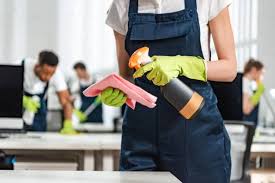A clean office isn’t just about appearance. It affects how people feel and work. But what makes an office cleaning job good — or just average? If you’re managing a commercial space, you’ve likely had moments where the standards slipped, and no one knew exactly why. This article lays out practical ways to raise the bar and hold it steady — no fluff, just clarity.
Start with Defining What “Clean” Actually Means
“Clean” means different things to different people. Some focus on smell, others on floors, and some on fingerprints. You need one definition everyone follows.
What to do:
- Make a checklist: desks wiped, bins emptied, carpets vacuumed, kitchen spotless.
- Set frequency: daily, weekly, or monthly tasks clearly labelled.
- Align with your industry: a law firm needs different cleaning priorities than a childcare centre.
Clear expectations stop finger-pointing and miscommunication later.
Use Visual Inspections — Not Just Tick Boxes
Relying only on tick-box reports lets things slide. You need human eyes to confirm quality.
What to do:
- Walk through with your cleaner occasionally.
- Use photos in before/after formats if practical.
- Score each section (0–5 scale works well).
Visual checks show real results and reduce guesswork. You see what’s clean, not what’s claimed.
Train Cleaners Like You Would Any Team Member
Too many workplaces treat cleaners as invisible. But they’re part of your operation and need proper onboarding.
What to do:
- Give training manuals with images.
- Show how to handle electronics, kitchen waste, or confidential areas.
- Reinforce what not to touch (personal belongings, sensitive equipment).
This builds consistency. It also makes cleaners feel valued — which helps retention.
Set Clear Access and Security Procedures
Even the best cleaner can’t meet expectations if they can’t access locked areas or aren’t sure where they can go.
What to do:
- Provide swipe card access (or schedule a staff escort).
- Label restricted zones clearly.
- Write out emergency contacts and after-hours protocols.
Security issues during cleaning often stem from unclear instructions. Prevent that with a basic orientation.
Keep Communication Two-Way
Standards fall when feedback doesn’t flow. Cleaners should feel safe raising concerns.
What to do:
- Hold monthly check-ins (15 minutes is enough).
- Use a logbook or messaging tool for updates and issues.
- Respond promptly to requests for supplies or schedule changes.
This shows cleaners they’re heard — and builds trust.
Monitor with Purpose, Not Pressure
Surveillance doesn’t fix sloppy cleaning. But structured reviews do.
What to do:
- Do quarterly audits using your original checklist.
- Ask staff to rate the space’s cleanliness (anonymous forms work well).
- Review any customer-facing areas weekly.
This keeps standards high — without micromanaging.
Wrap-Up: Office Cleaning is About Standards, Not Just Schedules
If you want better Office Cleaning, you don’t need flashy tools or buzzwords. You need clear expectations, real inspections, and a bit of human decency. Treat cleaning as part of your workplace culture, not just an outsourced task.
This article wasn’t about hiring services — but if you’re ready to reset your approach, it starts with setting a new standard. Visit this guide on Office Cleaning to explore how others define and maintain their standards. You’ll find plenty of ideas to apply in your space too. Learn more about smart practices for Office Cleaning, and raise the bar in ways that last.

